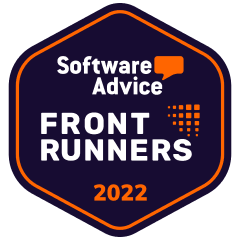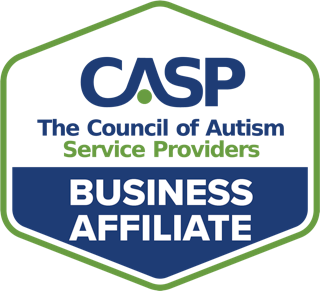As a BCBA, you have an astounding range of assessment tools you can use in ABA therapy. Having so many tools to understand a child’s abilities, challenges, and progress can be a real asset for treatment.
But it can also leave you wondering “which assessment tool should I use?” You have to consider multiple formats, from printed forms to online tools, which can make it difficult to track and report on progress over time. Finally, you have to consider whether the assessments meet the criteria of various payors.
To help you navigate these complexities, we’ve highlighted some ways you can use technology to track assessment data and measure the impact of interventions. As a bonus, we’re also giving you a guide to some common assessments used in ABA therapy.
Working Smarter not Harder
The best approach to assessments is typically a mix tailored to an individual child’s needs. Incorporating various standardized assessments can help you develop a holistic understanding of a child’s needs and strengths, so you can make your interventions personalized and evidence-based.
There are a lot of assessments to choose from. But we think we can work smarter, we can work more efficiently, and we can standardize care. When you standardize care, allowing for some variability when needed, you can improve the quality of care and can improve outcomes as well.
Donna Murray, PhD, CCC-SLP, Adjunct Professor of Clinical Pediatrics, Cincinnati Children's Hospital/University of Cincinnati College of Medicine Share this
So how do you make finding and implementing assessments more accessible and less daunting? How can you spend less time managing the assessment process and more time dedicated to interventions and direct care? Here’s a few simple tips:
How to Improve the Assessments Selection Process
-
Know and understand funder requirements for initial authorization and reauthorization.
-
Keep accurate records of authorization expiration dates and submission contact information. Use technology like Rethink or spreadsheets to track authorization data.
-
Select assessments that provide insights into a child’s strengths and deficits related to autism’s core deficits.
-
Familiarize yourself with assessment literature, seek mentorship from other BCBAs, and attend webinars and CE events to learn about unfamiliar assessments.
-
When available, use electronic assessments and questionnaires for completion and scoring.
“Going Digital”
Digital assessment platforms are more and more prevalent and can be a user-friendly, time-saving solution for both families and ABA professionals. Here are some of the benefits:
- They reduce printing paper and the need to track, carry, and store cumbersome paper files.
- They make completing the assessment easier for families and caregivers, often allowing for completion on the go.
- Many platforms automatically compile results and score the assessment, saving you considerable time and improving accuracy.
- When assessments are generated automatically, it saves time that can be spent directly with clients and on creating individualized treatment plans instead.
- You simplify the storage of critical data often requested by payors (e.g., data used for current and future authorization periods).
Moving from Assessments to Action
Ultimately, assessments are valuable tools that allow you to continuously track and communicate progress, identify deficit areas, and prioritize goals and interventions.
How you select them is a matter of professional judgment and child needs. It can be helpful to know, though, that digital assessments are an increasingly trusted and available resource – one that can streamline documentation, support compliance, and facilitate seamless communication between families, clinicians, and payors.
A Quick Guide to Assessment Standards and Types
Types of Assessment Standardization
Most assessments fall into two categories: Norm-referenced assessments compare a child’s performance to a norm group, a representative sample of children of the same age or developmental stage. These are useful for identifying general developmental delays, but using norms means that they don’t always reflect individual variations or learning profiles.
Criterion-referenced and curriculum-based assessments measure a child’s performance against a predefined set of criteria for specific skills or curriculum instead of comparing them to other children. These are useful for assessing a child’s abilities and targeting skills that need development, but they don’t show how a child compares to peers.
Common Assessments
As we’ve discussed, there are many assessments with various methodologies used either for specific age groups or specific behaviors. Here’s a list of several frequently used, evidence-based assessments for your reference.
|
Name |
Description |
|
An assessment designed for learners aged 12-48 months to measure early developmental goals such as communication, attention, eye contact, motor skills, and emotional regulation. |
|
|
A standardized diagnostic tool that assesses social interactions, communication, play, and restricted and repetitive behaviors in a clinical setting. |
|
|
A structured interview conducted with caregivers to gather comprehensive information about the child’s developmental history and current functioning, including social and communication abilities and repetitive behaviors. |
|
|
A norm-referenced observational tool that helps identify children with autism and differentiates in areas such as social interactions, communication, and repetitive behaviors. |
|
|
A comprehensive assessment system integrated with a curriculum that teaches language, cognitive, and social skills to individuals with autism and other developmental disabilities. |
|
|
A comprehensive assessment that evaluates behavior and emotions in children and adolescents, completed by parents, teachers, and the child. |
|
|
Verbal Behavior Milestones Assessment and Placement Program (VB-MAPP) |
A criterion-referenced tool designed to evaluate language and social skills development in children with autism and other developmental disabilities. |
|
A comprehensive assessment of adaptive functioning for individuals with developmental disabilities, with norm-referenced measures for communication, daily living skills, socialization, and motor skills. |
|
|
Behavior Rating Scale of Executive Function, Second Edition (BRIEF-2) |
Completed by parents and teachers to evaluate executive functions in home and school environments (norm-referenced), such as inhibition, shifting, emotional control, and working memory. |
|
Assessment of Basic Language and Learning Skills – Revised (ABLLS-R) |
Focuses on language and learning capabilities (e.g., receptive and expressive language, visual performance, self-help skills, and social interactions) of autistic children or children with other developmental impairments. |
|
A screening tool completed by parents that focuses on further evaluation for autism spectrum disorders (ASD), such as communication skills and social functioning. |
|
|
A detailed view of how autism affects the child’s and family’s quality of life across physical health, emotional well-being, social functioning, and family impact. |
|
|
Measures health-related quality of life and overall well-being with input from children and parents, covering physical, emotional, social, and school functioning. |
The Virtual IPM Measure Set
In addition, the Autism Analytica Virtual IPM (Identify, Predict, Monitor) Measure Set, available via RethinkBH, includes a comprehensive battery of 10 standardized, norm-referenced assessments. These measures cover a range of neurodevelopmental conditions, including autism spectrum disorder (ASD), and are standardized, clinically-validated, and published in peer-reviewed journals, meeting most payors’ policies for authorization.
|
Clinically Validated Assessment Name |
Domains Covered |
|
Autism Symptom Dimensions Questionnaire (ASDQ) |
|
|
Comprehensive Anxiety Scale (CAS) |
Anxiety Symptoms |
|
ADHD-ASSESS |
DSM-5 ADHD Rating Scale |
|
Mood and Irritability Symptoms (MIS) |
Mood and Irritability Symptoms / Internalizing Symptoms |
|
Challenging Behavior Scale (CBS) |
Challenging Behavior |
|
Daily Living Skills (DLS) |
Daily Living Skills / Practical Adaptive Functioning |
|
Executive Functioning Scale (EFS) |
Executive Functioning |
|
Motor Skills Scale (MSS) |
Motor Adaptive Functioning |
|
Sleep Problems Questionnaire (SPQ) |
Sleep Problems |
|
Child and Family Quality of Life – Second Edition (CFQL-2) |
Quality of Life and a Subset of Social Determinants of Health |
For More Insights
Watch as Dr. Donna Murray, PhD, CCC-SLP, discusses the impact of stronger outcome measures in standardizing care for individuals with autism spectrum disorder in the full replay of our virtual Fireside Chat with Autism Analytica.









